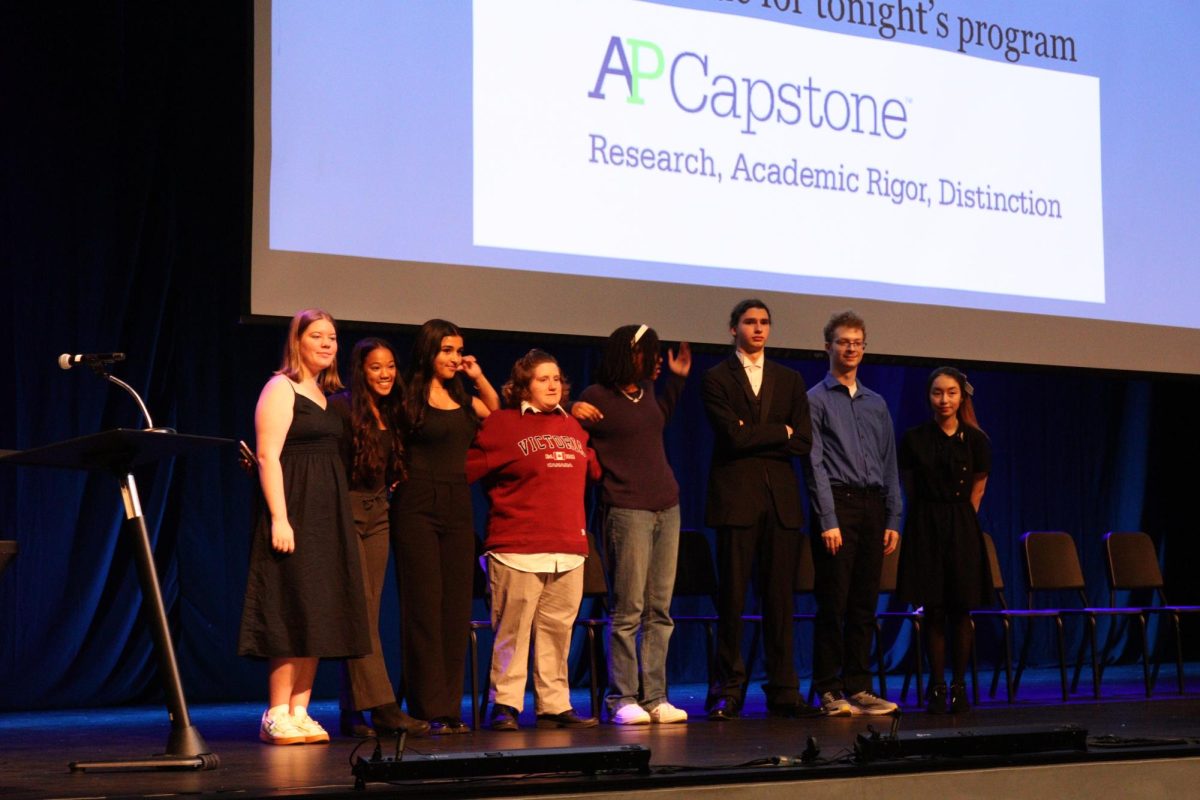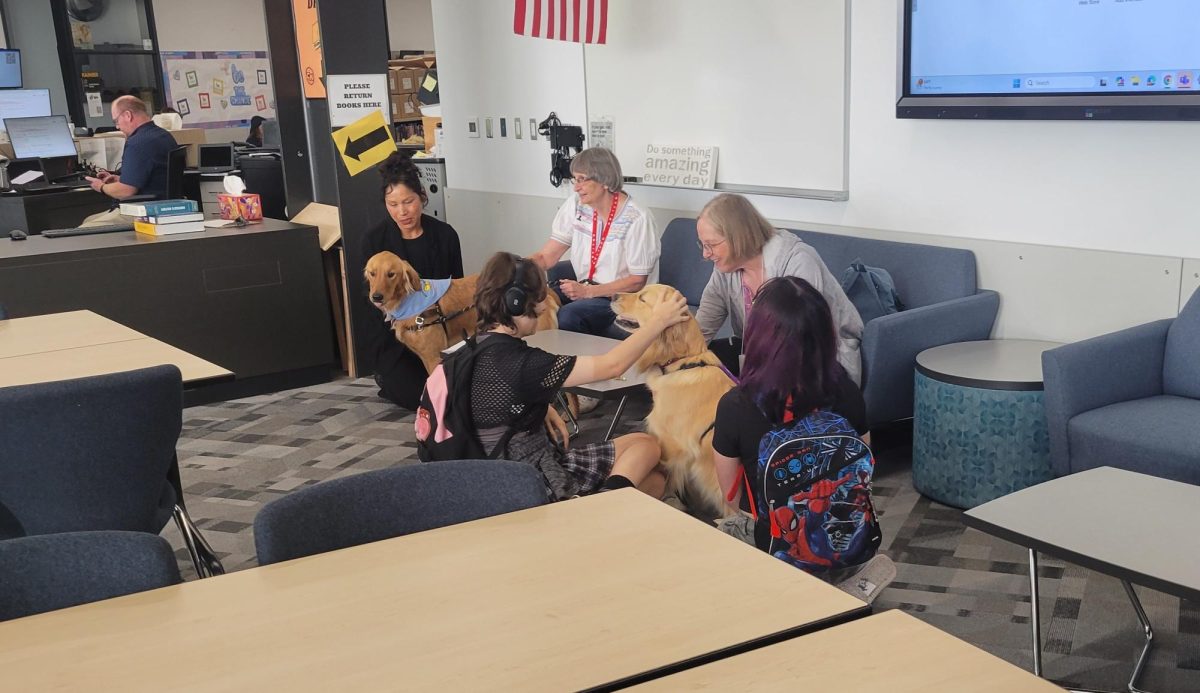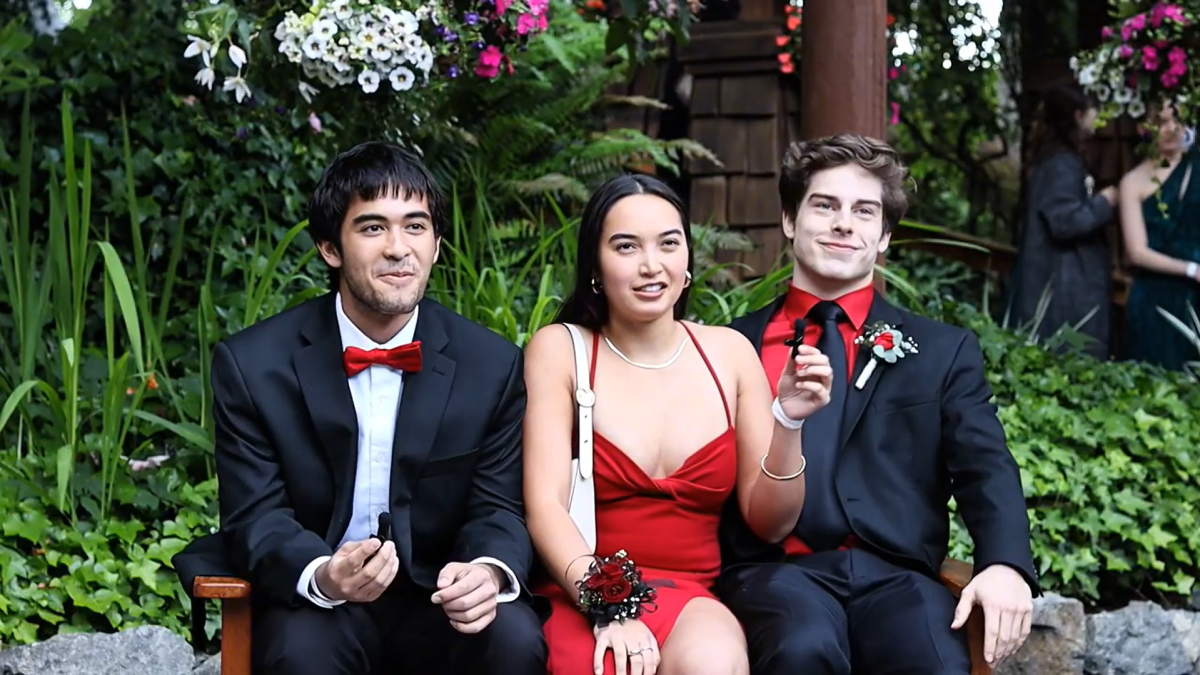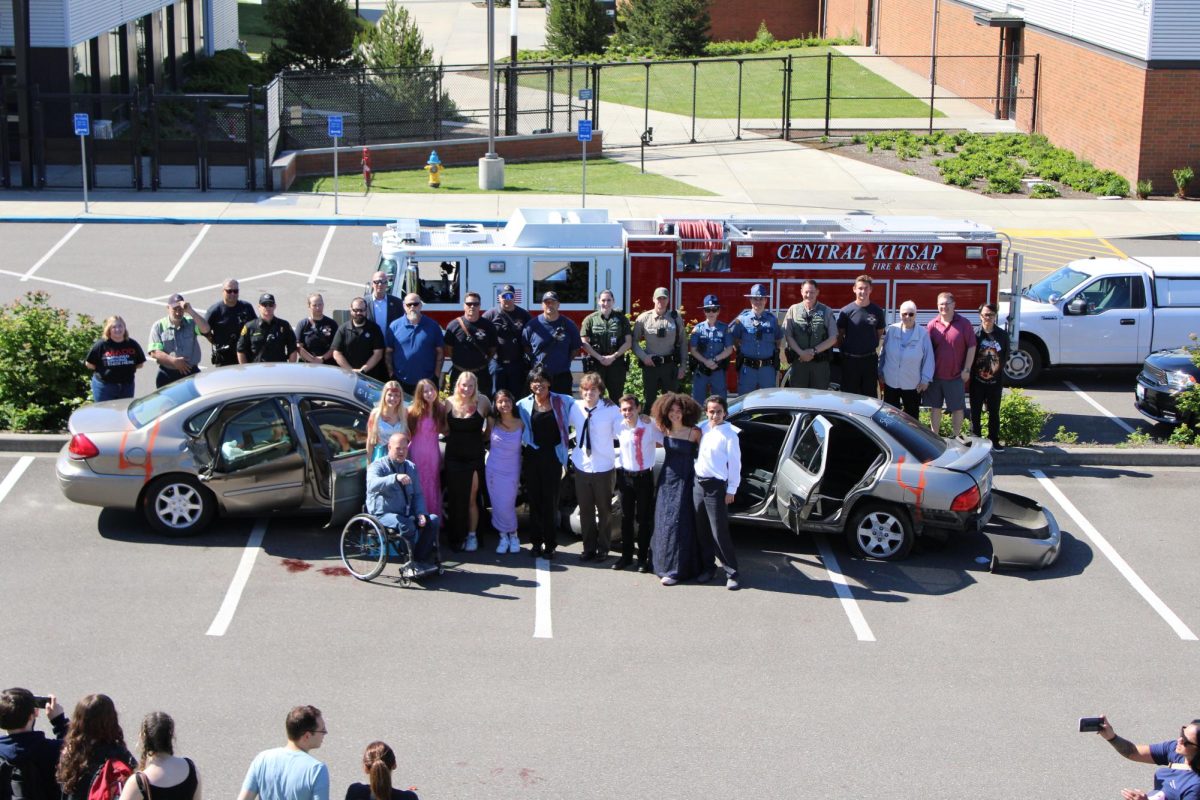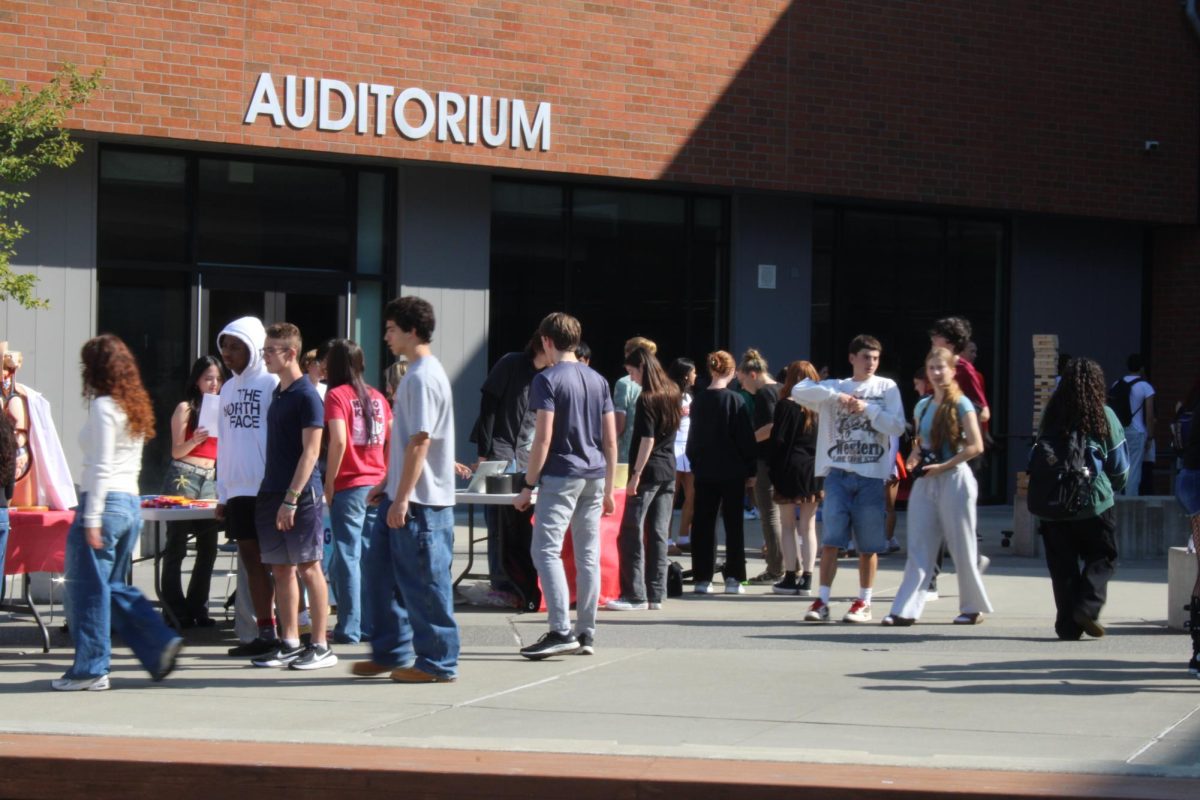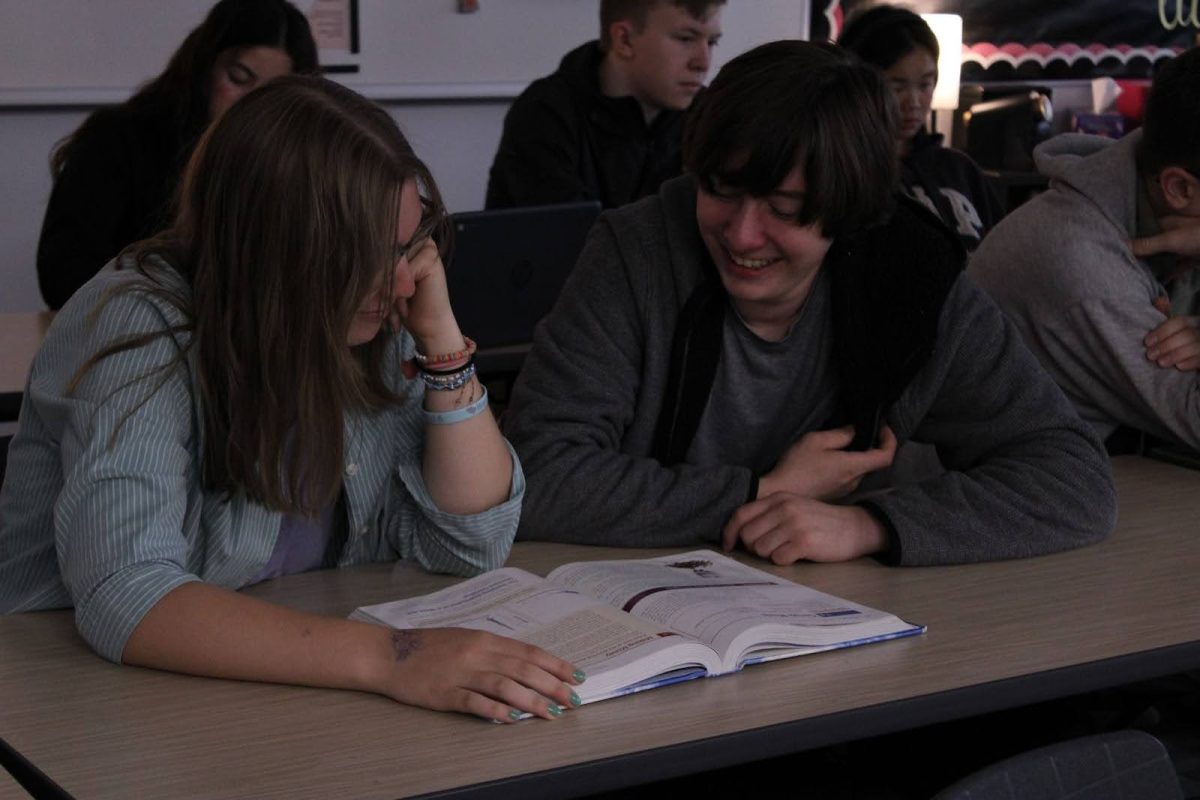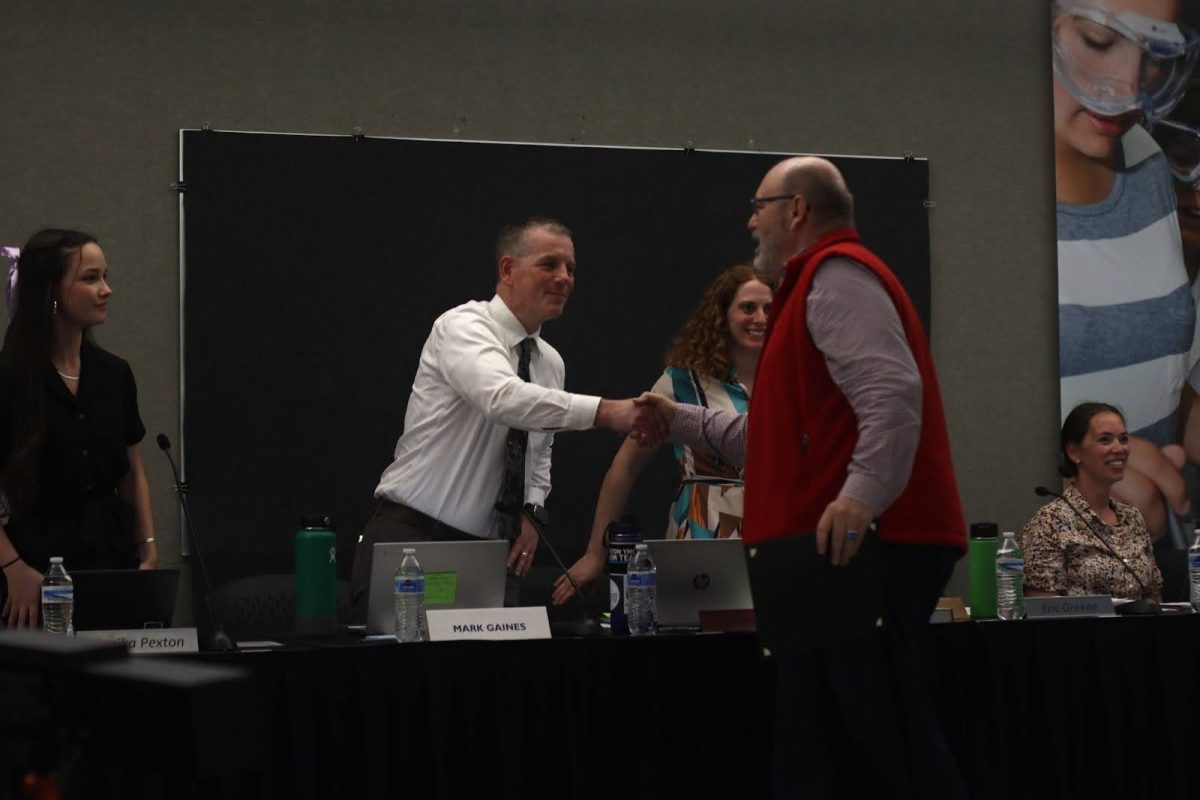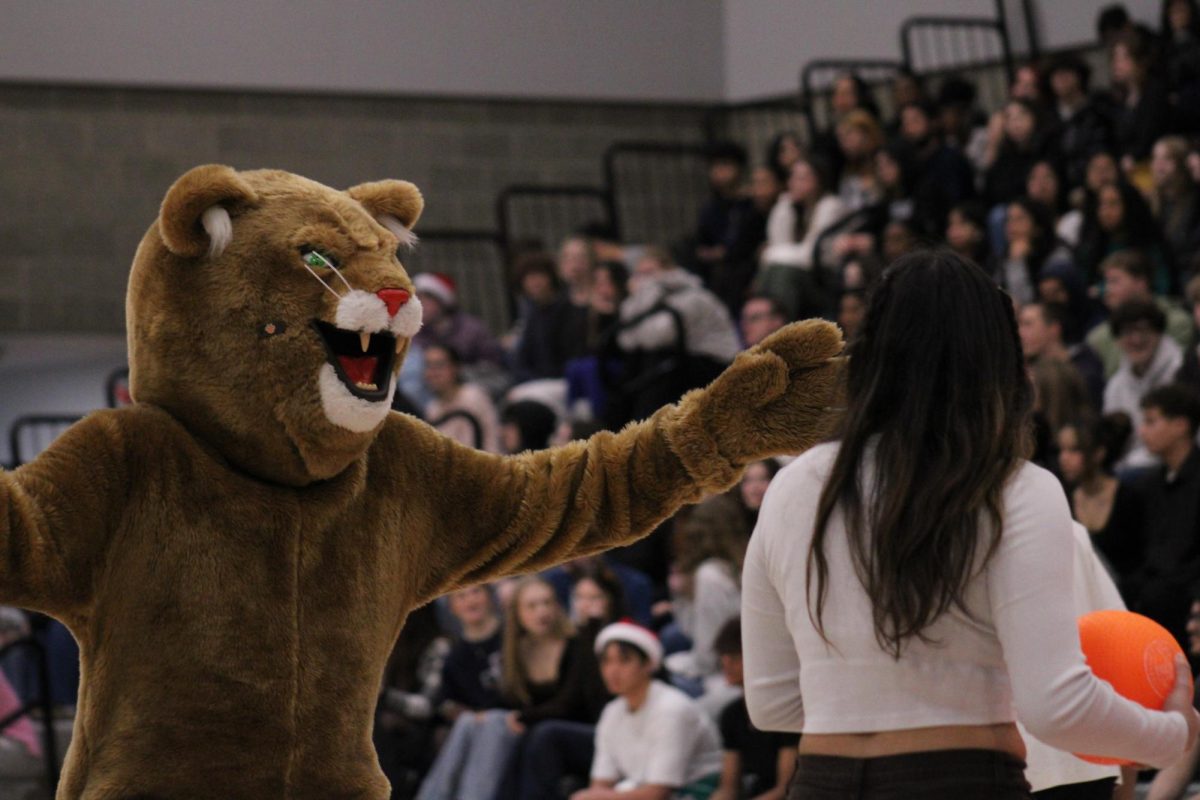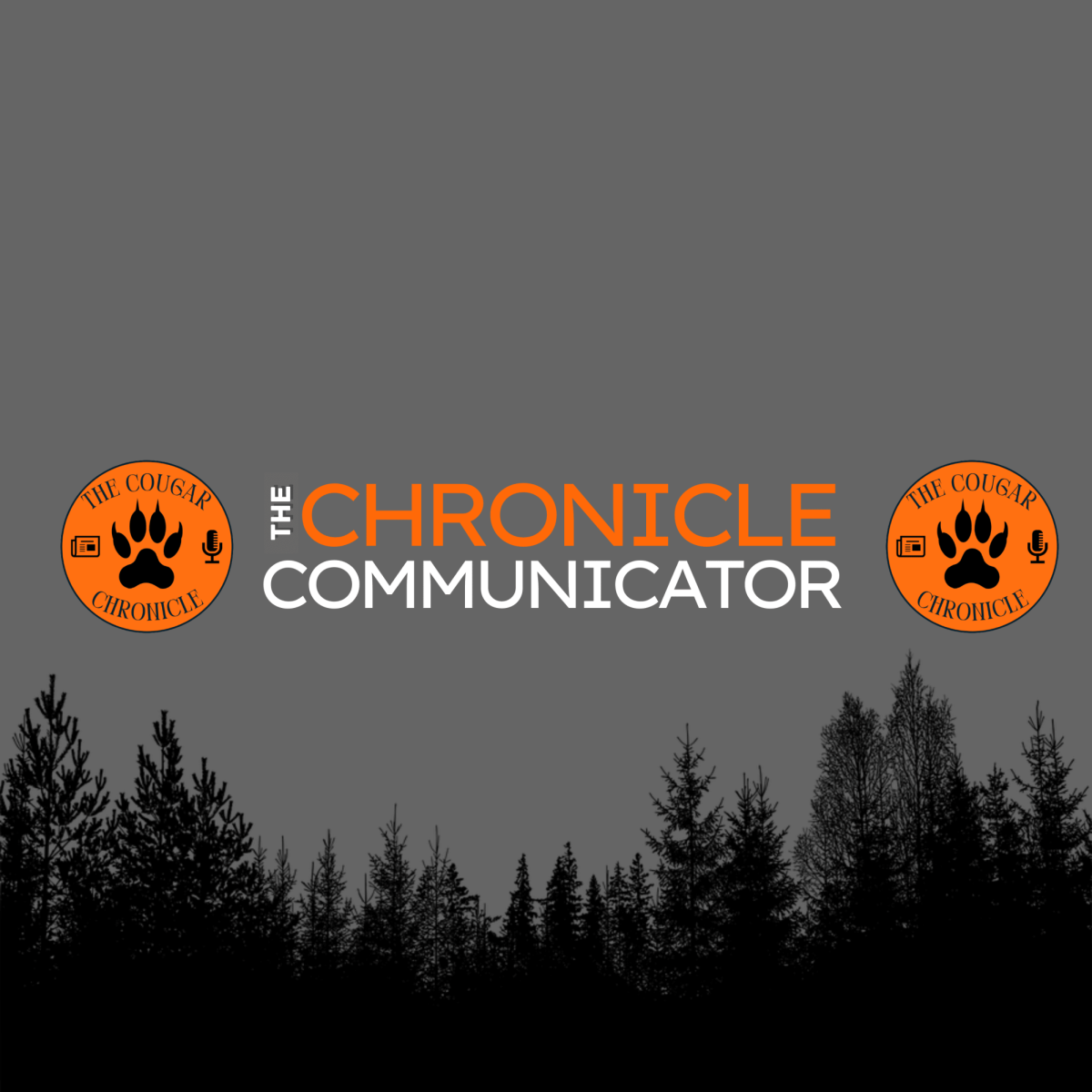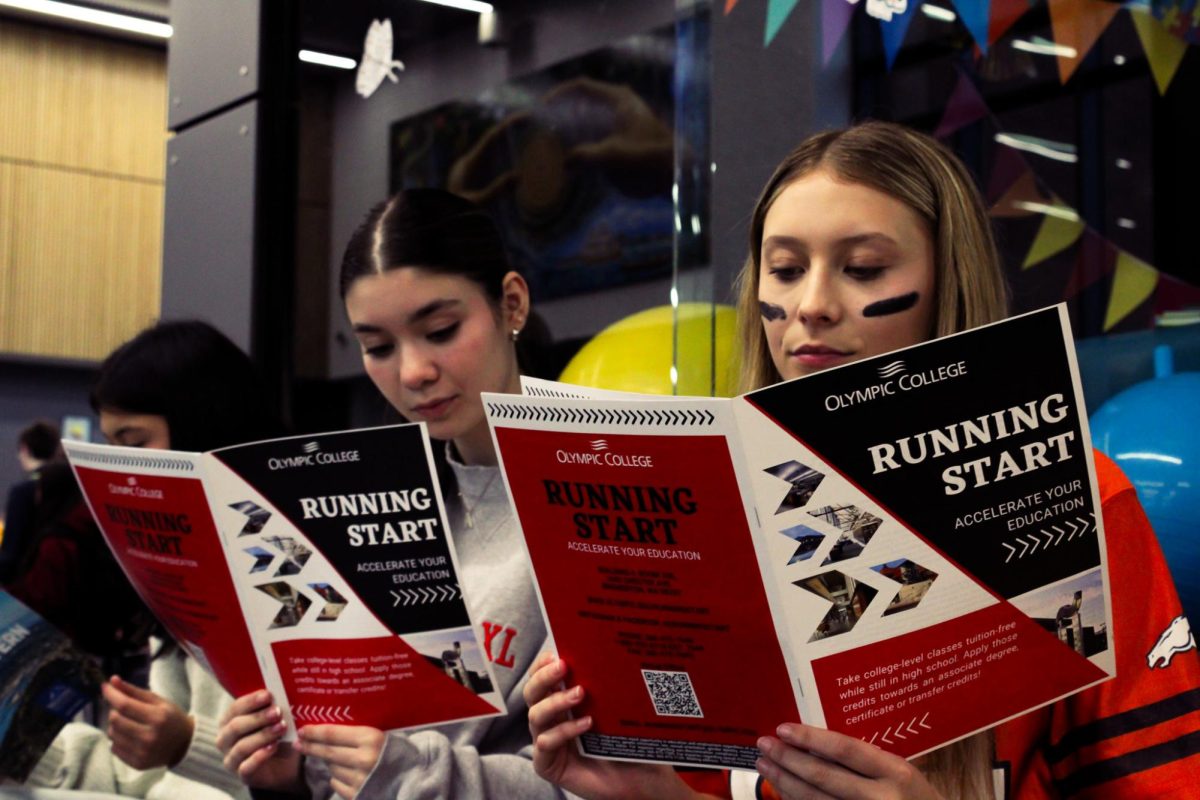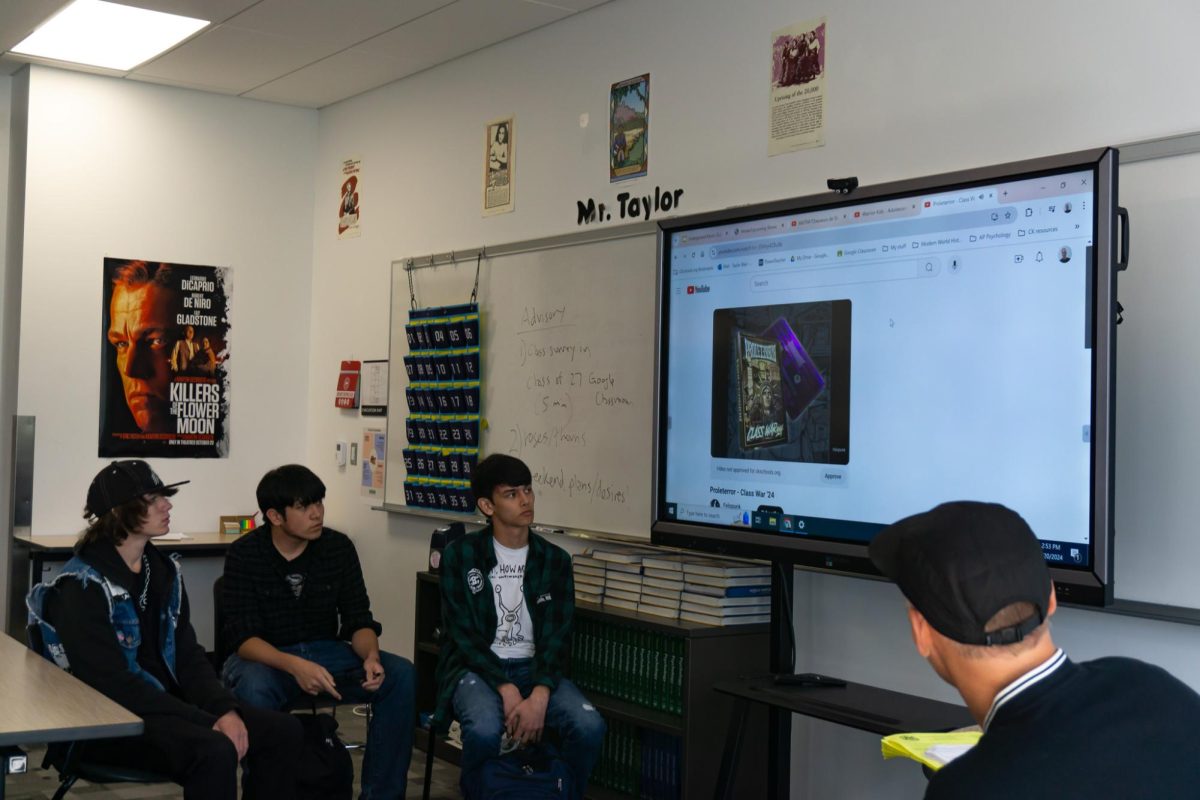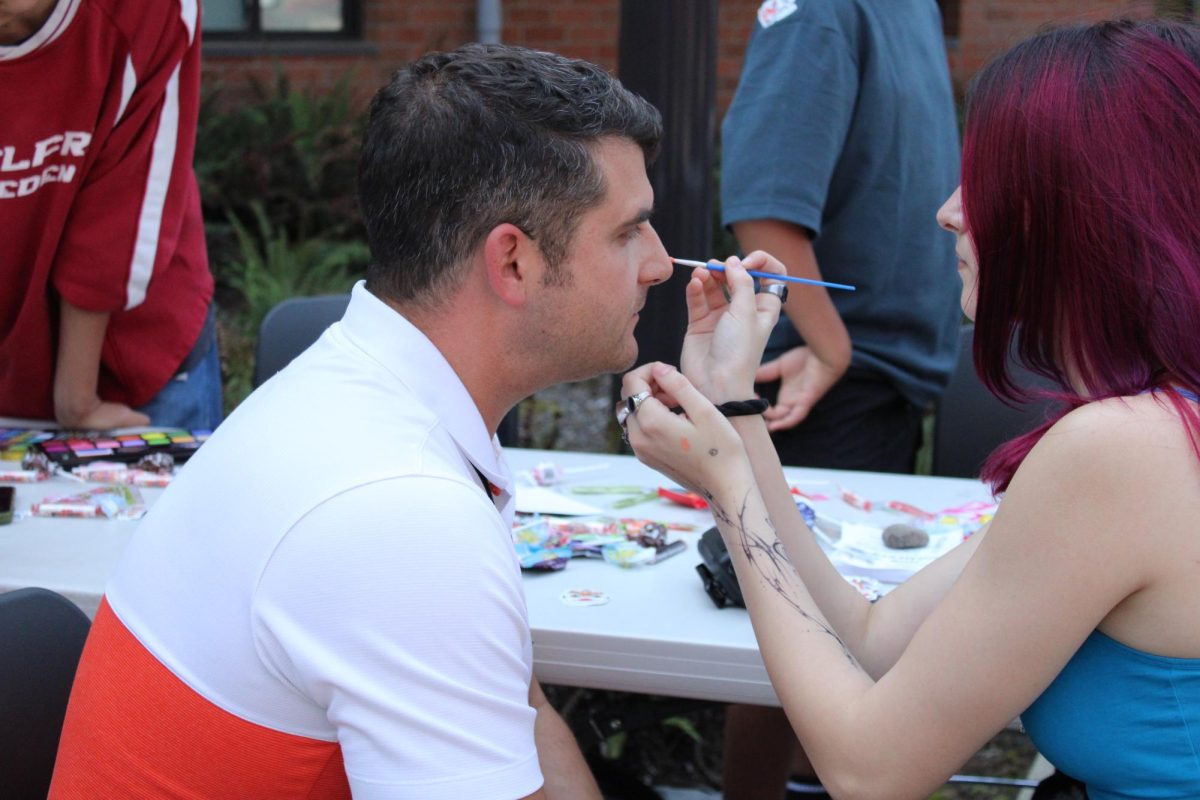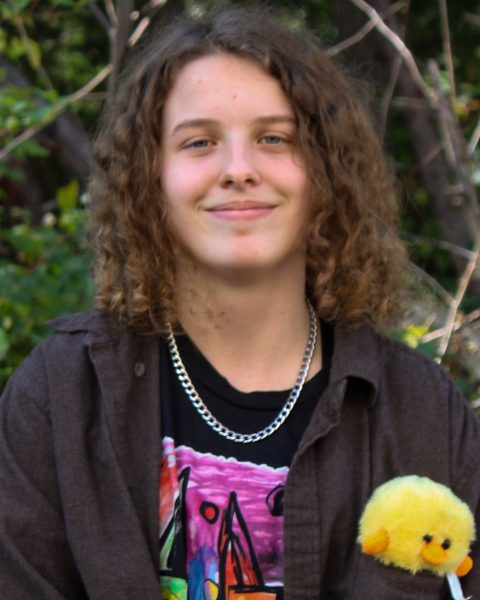On May 21, 2024 at 5 p.m., AP Research hosted their annual symposium that recognized student’s successes and efforts that have been put into the two yearlong Capstone program. This symposium let students give a preview of their research through a short presentation in the CK Performing Arts Center, connecting students to their community by sharing their hard work with friends, family, and staff at CKHS.
“I didn’t really stress about it too much because it was kind of a completion grade and also, I was pretty familiar with what I’d been working on at that point,” said Yana Mathew, an AP research student and senior at CKHS. “…It was nice to be able to stand in front of an audience. I think I mainly was looking at my script, so I didn’t get my head up as much as I wanted to, but it was pretty cool.”
After the presentations, trifold posters of students’ work were lined up on tables in the gym hallway, allowing for each student to be able to go into more detail with people one on one about their individual topics.
“I chose to research indigenous architecture and its uses within transitional housing,” said Shayla Sutliff, an AP Research student and senior at CKHS. “I did that because I saw a need within the community. Washington state has really high levels of homelessness, especially in big cities like Seattle, Tacoma, and Spokane…Those shelters that a lot of organizations use are really unwelcoming because of their layout and because of the principles behind them, people are treated like criminals and people are not treated like people. I have always had a really big issue with that and I’ve always thought that that’s the wrong way to go about homelessness. When people talk about homelessness, they’ll use a lot of unsavory language and just not remember that people are people no matter their circumstances.”
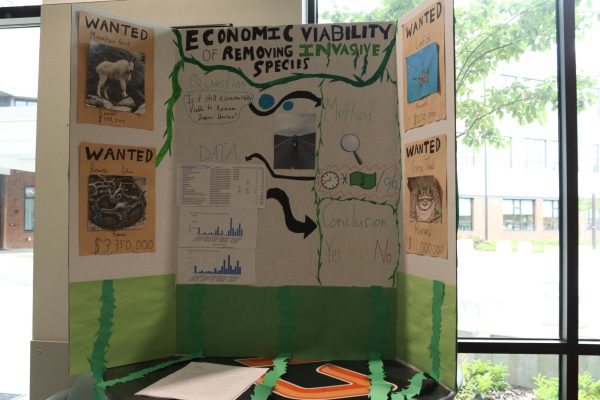
One of the most important parts about AP Research is developing what you are going to research. According to Sutliff, it’s a lot of work outside of class, a lot of brainstorming over the summer from Seminar to Research to gauge and understand ideas for your topic.
“I was in a Bass Pro Shop with my dad getting fishing gear for a summer camping trip,” said Taylor. “He told me this story about mountain goats. And how, because there was an incident where hikers were attacked by the mountain goats, they had to get all of them out of the environment. So I looked it up. I was like, there’s no way this is real, right? And it was, and went a little bit deeper than that. So I thought, hmm, there’s no way that that could have been like, economically viable. So I pursued the economic viability of removing invasive species.”
Like most AP classes, it takes time and a lot of hard work before the finished product is perfect, and through this journey it is not smooth sailing the whole way. James Taylor, an AP Research student, shares his struggles that came with creating his AP Research project.
“There were a lot of areas that were sketchy,” said Taylor. “As in, I didn’t know where to proceed because there was no clear direction. In some of the calculations I had to make with my data, there was no set of equations I could follow. So I had to improvise with my own, and that felt kind of sketchy, but at the same time, I didn’t really have much of a choice.”
According to both Sutliff and Taylor, the one thing you want to steer clear from in both Seminar and Research is procrastinating. They stress the importance of staying on top of your work and not falling behind since most things you do in both classes are independent work. While Seminar and Research tend to go hand and hand there are some things you may want to be aware of if you’re moving forward from Seminar to Research.
“For your research question [you] have to find an existing gap, but it’s not as daunting as it may seem like,” said Mathew. “You can just narrow your scope down to this [specific] area, and that’s a limitation. Just don’t do something general like people anxious in school… So just kind of [find] a unique perspective on a topic, and you’re pretty much good to go with your research question.”
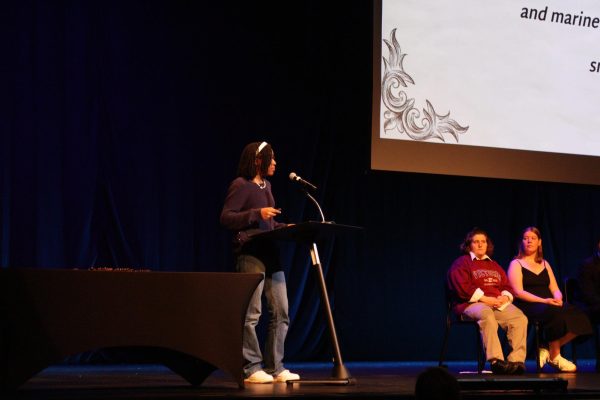
The Capstone program is not just another two classes to take for an “easy A” or to finish your class requirements, but as an opportunity to learn new skills and to think in a way different from the usual or that challenges the status quo.
“As somebody who wanted to go into research because of this class, I’ve learned how gratifying it is to put that much work into something and how gratifying it is to really face those setbacks head on,” said Sutliff, “My research at the beginning was not what it morphed into – I had a very different question. It was all about sustainability and affordable architecture. And so to put that much work into something and to morph it into a final product, like something that has changed so much over the last year. It really taught me the value of putting in that hard work and being able to take those setbacks head on and still create something that I’m proud of.”

